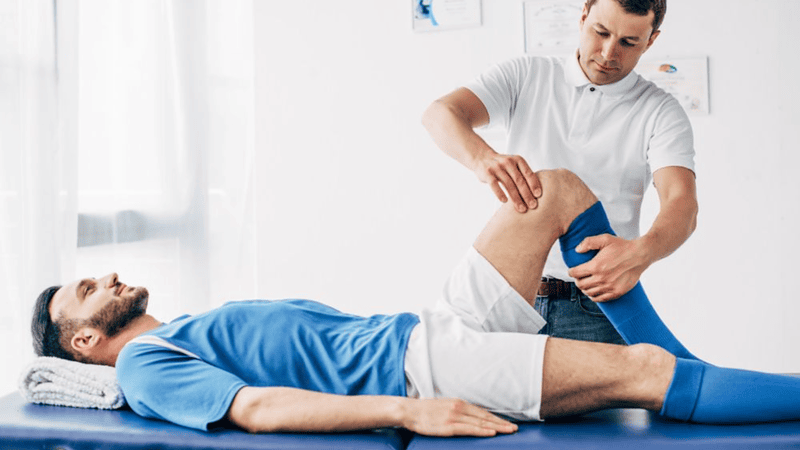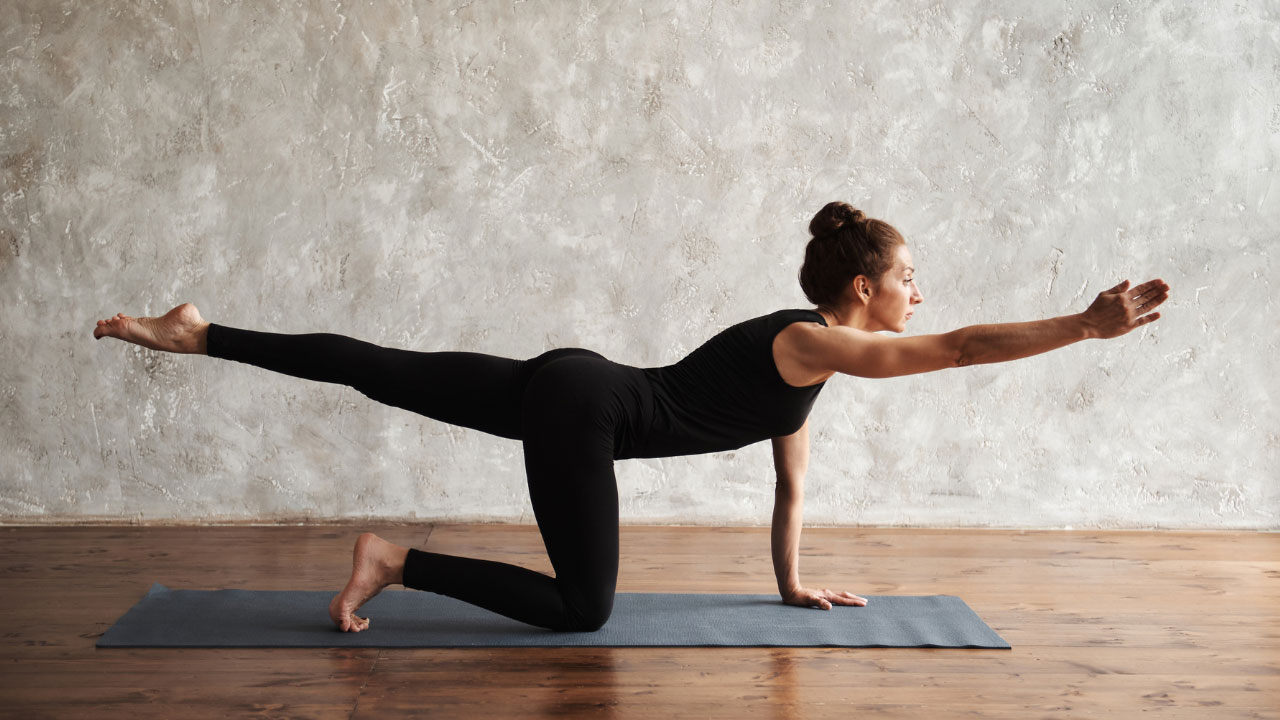
5 yoga moves to stabilise the core
Simple yoga exercises to strengthen and stabilise our core. By Laurel Stuart
In the Western world, there is something deeply alluring about a sculpted core. The cover of almost every fitness magazine sports a skimpily dressed model with chiseled abs. Today ‘rock-hard’ abdominals are accepted by most to be the embodiment of great core health.
Yet for some healthcare specialists, core health includes more muscles than just those that make up our abdominal wall. For these specialists, the core muscles include all the muscles that stabilise our spine. The deep back muscles, the diaphragm, the pelvic muscles and the abdominals all contribute to core stabilisation.
Healthy core muscles help ensure our spines stay strong and are important for back health. In yoga, there is an old staying that we are only as healthy as our spines are strong and supple.
Yoga is teeming with great exercises to strengthen the core. This article looks at a few traditional and more modern yoga postures that strengthen the middle section of our bodies. These exercises can be practiced to some degree by every level of practitioner. Practice these postures alone, as a sequence or add them to your regular exercise routine.
1. Abdominals With A Roll
Abdominals with a Roll is an abdominal move practiced in Forrest Yoga. Do this exercise with your feet flat on the floor or with your legs bent at a 90º angle, shins parallel to the floor if working with your legs straight feels too uncomfortable for you. Place a rolled-up mat or towel (5 to 8 inches in diameter) in between your thighs at the hips. Inhale hold your breath, press your lower back into the floor, curl your tailbone up, squeeze the roll with your inner thighs. Exhale and curl your head and shoulders off the mat, reaching your elbows up to the ceiling. At the end of your exhale pull your belly down. Inhale release your head to the floor, rest on your next exhale. That’s one round. Do between 3 to 8 rounds.
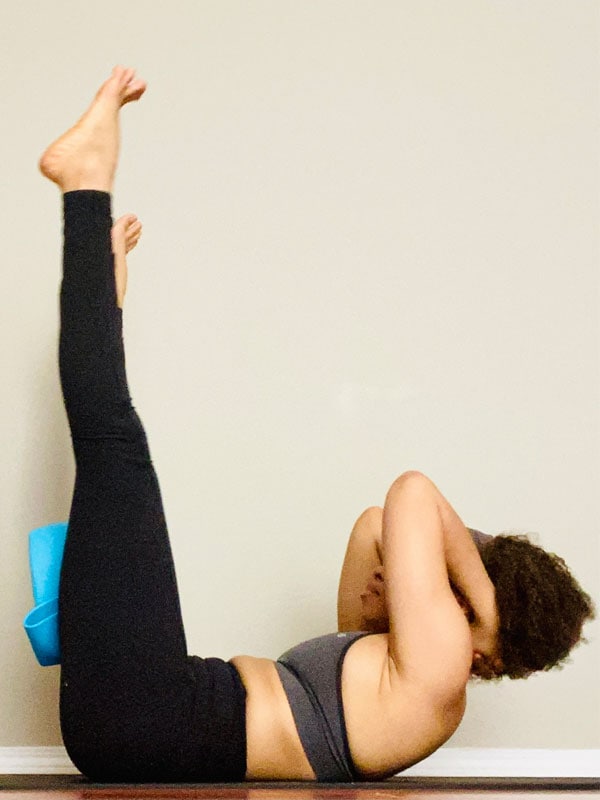
2. Uddiyana Bandha
Advanced practitioners can create a vacuum-like seal in their abdomen when they practice uddiyana bandha or flying up lock. Beginners may not be able to achieve the vacuum-sealed appearance when they first begin practicing this, but their core muscles are still being exercised. Stand with your feet about hips distance apart. Press the heels of your hands into your thighs. Take a long deep inhale, then exhale completely, and forcefully through your mouth. Pull your belly in and up. Lift and spread your ribs. Chin down slightly. Hold for as long as possible without discomfort, then release. That’s one round. Do between 1 to 3 rounds.
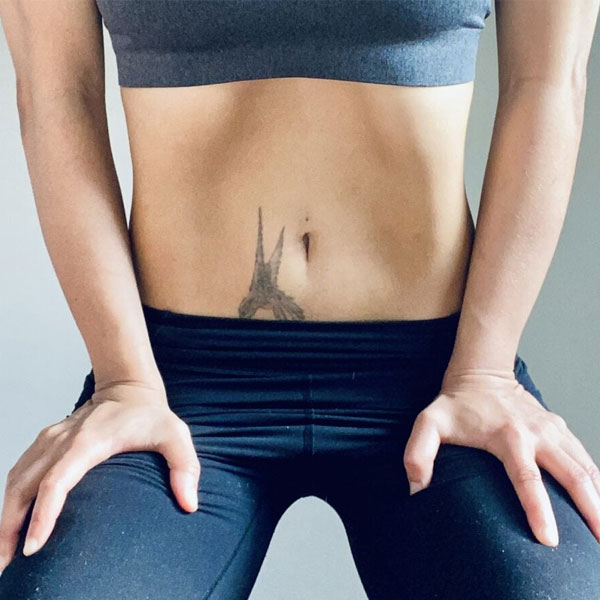
3. Bird Dog Pose
Bird Dog pose strengthens our core muscles and improves proprioception. Proprioception is our body’s ability to sense its location, movement, and actions.
Start on your hands and knees. Extend your left leg straight behind you. Your left toes are on the floor. This is stage one. There should be no strain in the wrists or knees. If there is strain in the wrists try doing the exercise with the hands in a fist position, knuckles padded. If the knees are uncomfortable try padding them as well. In the second stage extend your right arm out in front of you, right palm facing down. In the final stage, lift the left toes off the floor about one to two inches, balancing in the pose. As you exhale pull your belly in towards the spine, contract the glutes. Stay for 3 to 10 breaths. Do 3 rounds on each side.
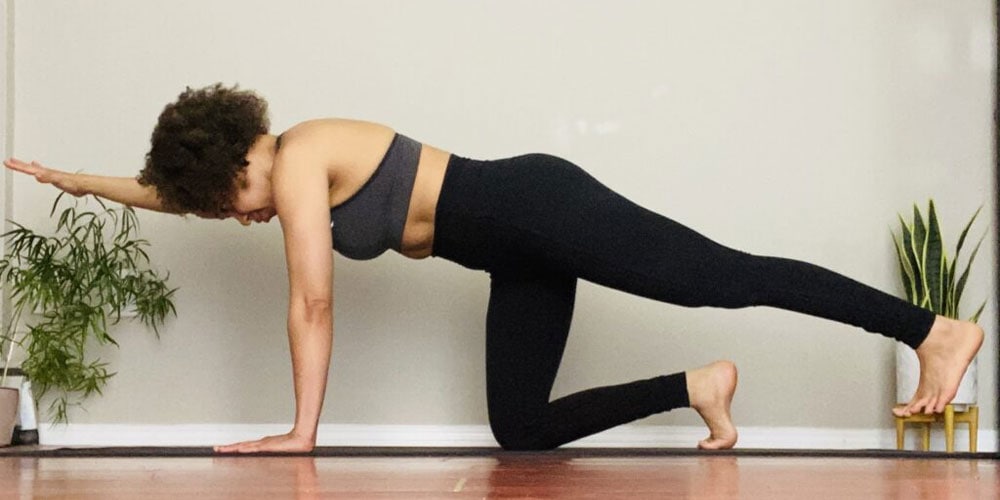
4. Prelude To Wave Dancer Pose Stage One
Prelude to Wave Dancer pose is another Forrest Yoga move similar to locust pose in other yoga styles. Start lying on your belly, hands under your shoulders, top of your feet flat down, your feet pressing into the mat. Tuck your tailbone. This movement pushes the tops of the thighs into the floor. Contract your inner leg muscles. Inhale and expand your belly, let the expansion of your belly into the floor lift your chest. There is a light press through the arms. Exhale keep tucking the tailbone as you release. Do 3 to 8 rounds.
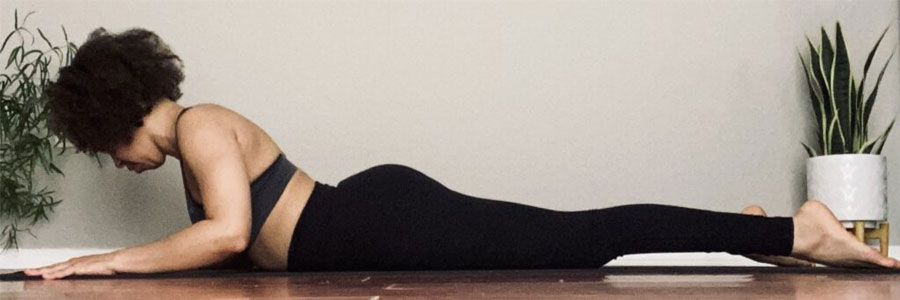
5. Elbow Side Plank
Start on your side with your elbow under your supporting shoulder. The supporting forearm can be parallel with the long edge of your mat or parallel with the short edge of your mat. Draw the supporting shoulder down your back away from your ears then lift your hips off the floor. Try to have the core of your body parallel to the long edge of your mat. Hip bones and shoulder bones stacked on top of each other. Beginners can practice this pose with the knees down. Stronger students can practice Elbow Side Plank with only the forearm and feet touching the floor. On your exhales draw the abdominal wall in towards your spine, create a tightening or firming sensation in the front sides and back of your abdominal wall. Hold the pose for 3 to 10 breaths. That’s one rep. Do three reps.
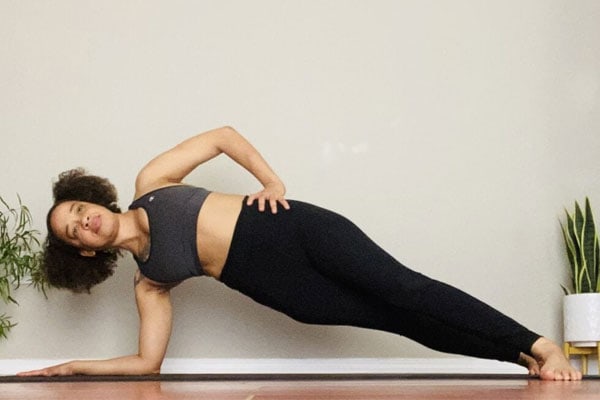
Enjoy the sensations in your core!




